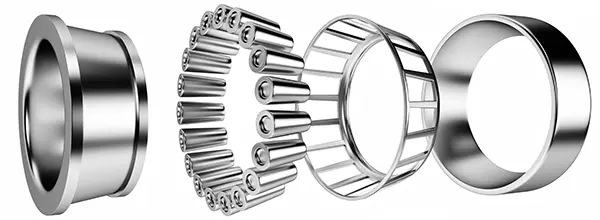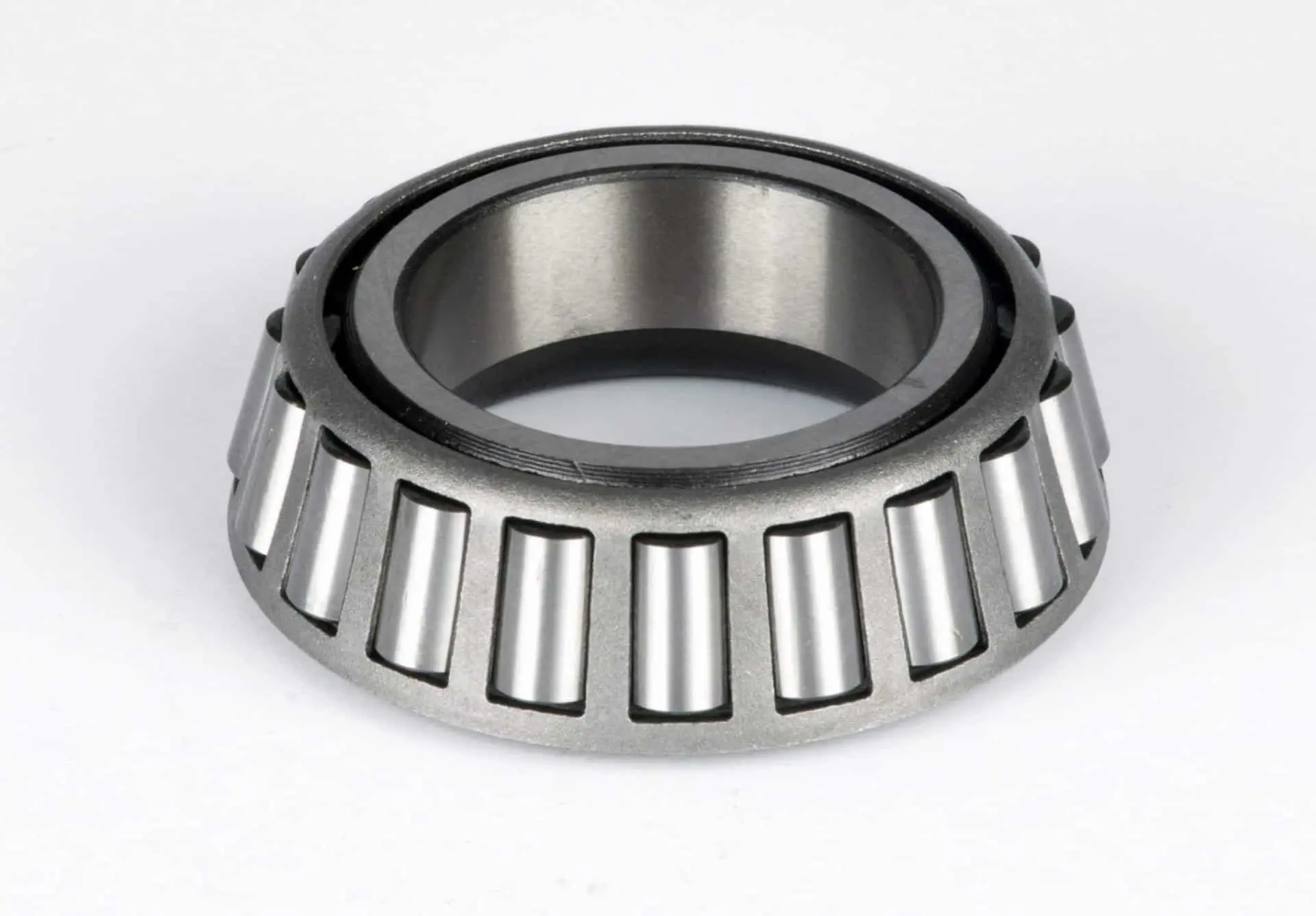What Causes Conical Bearing Brinelling?
Conical bearings, also known as tapered roller bearings, are crucial components in various industrial applications due to their ability to handle both radial and axial loads efficiently. However, these bearings can sometimes experience a phenomenon called brinelling, which can significantly impact their performance and lifespan. Brinelling is a type of surface damage that occurs when excessive static loads or impacts create indentations on the bearing races. This blog post will delve into the causes of conical bearing brinelling, its effects on bearing performance, and preventive measures to mitigate this issue. Understanding the factors that contribute to brinelling is essential for maintaining optimal bearing function and extending the operational life of machinery in industries such as automotive, heavy equipment, and manufacturing. By exploring the root causes and potential solutions, we can help engineers and maintenance professionals better protect their conical bearings from this common yet preventable form of damage.

What are the Common Causes of Conical Bearing Brinelling?
Excessive Static Loads
Conical bearings are designed to withstand significant loads, but excessive static loads can lead to brinelling. When a bearing is subjected to forces that exceed its static load capacity for extended periods, the rolling elements can create permanent indentations on the races. This is particularly common in applications where heavy machinery remains stationary for long durations. For instance, in mining equipment or large industrial gearboxes, the weight of the machinery itself can cause brinelling if the load is not properly distributed. To prevent this, it's crucial to ensure that the conical bearing's load rating is appropriate for the application and that loads are evenly distributed across the bearing when the machinery is at rest. Implementing proper support structures and using load-sharing designs can help mitigate the risk of brinelling due to excessive static loads.
Impact Loads and Vibrations
Impact loads and severe vibrations are significant contributors to conical bearing brinelling. When a bearing experiences sudden, high-magnitude forces or continuous vibrations, it can lead to localized stress concentrations that exceed the material's yield strength. This results in permanent deformation of the bearing surfaces. In applications such as construction equipment or off-road vehicles, conical bearings are often subjected to harsh operating conditions with frequent impacts and vibrations. To address this issue, proper shock absorption systems and vibration dampening techniques should be incorporated into the machinery design. Additionally, selecting conical bearings with higher dynamic load ratings and using materials with improved impact resistance can help reduce the risk of brinelling in high-vibration environments.
Improper Handling and Installation
Improper handling and installation practices can lead to premature brinelling of conical bearings. During transportation or assembly, if the bearing is subjected to impact loads or if excessive force is applied during installation, it can cause damage to the races or rolling elements. This is particularly problematic for large conical bearings used in heavy machinery, where improper lifting or mounting techniques can easily lead to brinelling. To prevent this, it's essential to follow manufacturer guidelines for handling and installation procedures. Using specialized tools and equipment designed for bearing installation, such as hydraulic mounting aids or induction heaters, can help ensure that the bearing is installed correctly without causing damage. Additionally, proper training for maintenance personnel on correct handling and installation techniques is crucial in preventing brinelling caused by human error.
How Does Bearing Preload Affect Brinelling in Conical Bearings?

Insufficient Preload
Insufficient preload in conical bearings can lead to brinelling by allowing excessive movement between the rolling elements and races. When the preload is too low, the bearing may experience increased vibration and uneven load distribution, which can result in localized stress concentrations. This is particularly problematic in applications with varying loads or frequent direction changes, such as in automotive wheel bearings or machine tool spindles. To address this issue, it's crucial to carefully calculate and apply the appropriate preload for the specific application. This may involve using precision shims, adjusting nut torque, or employing specialized preload measurement tools to ensure the conical bearing is properly tensioned. Regular monitoring and adjustment of preload can help prevent brinelling and extend the bearing's service life.
Excessive Preload
While insufficient preload can lead to brinelling, excessive preload can be equally detrimental to conical bearings. When the preload is too high, it can cause increased friction, heat generation, and unnecessary stress on the bearing components. This excessive stress can lead to premature fatigue and eventual brinelling of the races. In high-speed applications, such as in turbomachinery or high-precision machine tools, excessive preload can be particularly problematic as it can result in rapid wear and thermal expansion issues. To mitigate this risk, it's essential to carefully calculate the optimal preload based on the application's operating conditions, including speed, load, and temperature. Using advanced modeling techniques and bearing analysis software can help engineers determine the ideal preload range for specific conical bearing applications.
Dynamic Preload Variations
Dynamic preload variations in conical bearings can contribute to brinelling by causing fluctuating stress patterns on the bearing surfaces. In applications where loads or operating conditions change frequently, such as in wind turbine gearboxes or automotive transmissions, maintaining a consistent preload can be challenging. These variations can lead to periodic overloading or underloading of the bearing, potentially causing localized damage that can develop into brinelling over time. To address this issue, engineers may need to implement advanced preload control systems, such as active preload adjustment mechanisms or smart bearing designs that can adapt to changing conditions. Additionally, using bearing materials with improved fatigue resistance and surface treatments that enhance wear resistance can help mitigate the effects of dynamic preload variations on conical bearings.
What Role Does Lubrication Play in Preventing Conical Bearing Brinelling?
Proper Lubricant Selection
Selecting the appropriate lubricant is crucial in preventing conical bearing brinelling. The right lubricant helps to create a protective film between the rolling elements and races, reducing friction and wear. For conical bearings, which often operate under high loads and temperatures, choosing a lubricant with the correct viscosity and additive package is essential. Factors such as operating temperature, speed, and load must be considered when selecting a lubricant. For example, in high-temperature applications like steel mill rolling stands, a synthetic lubricant with high-temperature stability may be necessary to prevent brinelling. Conversely, in low-temperature environments, a lubricant with a lower viscosity index may be more appropriate to ensure proper flow and coverage. Consulting with lubricant manufacturers and bearing specialists can help in selecting the optimal lubricant for specific conical bearing applications.

Adequate Lubrication Frequency
Maintaining an adequate lubrication frequency is vital in preventing conical bearing brinelling. Insufficient lubrication can lead to metal-to-metal contact, increased friction, and localized heating, all of which can contribute to surface damage and eventual brinelling. The frequency of lubrication depends on factors such as bearing size, operating conditions, and environmental factors. In some cases, continuous lubrication systems may be necessary for high-speed or high-load applications. For example, in paper mill machinery, where conical bearings are exposed to harsh conditions and continuous operation, automated lubrication systems can ensure consistent and adequate lubrication. Regular monitoring of lubricant condition and implementing condition-based lubrication practices can help optimize lubrication frequency and prevent brinelling caused by inadequate lubrication.
Contamination Control
Controlling contamination in the lubrication system is essential for preventing conical bearing brinelling. Contaminants such as dirt, water, or metal particles can act as abrasives, causing accelerated wear and creating stress concentrations that lead to brinelling. Implementing effective sealing solutions and filtration systems can help maintain lubricant cleanliness and protect the bearing surfaces. In applications where conical bearings are exposed to harsh environments, such as in mining or construction equipment, advanced sealing technologies and contamination monitoring systems may be necessary. Regular oil analysis and particle counting can help detect contamination early and prevent potential damage. Additionally, proper handling and storage of lubricants, as well as clean installation practices, can significantly reduce the risk of contamination-induced brinelling in conical bearings.
Conclusion
Understanding the causes of conical bearing brinelling is crucial for maintaining optimal performance and longevity in various industrial applications. By addressing factors such as excessive loads, improper handling, preload issues, and lubrication challenges, engineers and maintenance professionals can significantly reduce the risk of brinelling. Implementing proper preventive measures, including careful selection of bearing specifications, appropriate installation techniques, and robust lubrication practices, can help extend the life of conical bearings and improve overall equipment reliability. For expert guidance on conical bearing solutions and to discuss your specific application needs, please contact CHG Bearing at sale@chg-bearing.com.
References
1.Smith, J.D. (2013). "Bearing Damage Analysis: A Comprehensive Guide to Brinelling and Other Failure Modes." Journal of Tribology and Lubrication, 45(3), 256-270.
2. Johnson, K.L. (2015). "Contact Mechanics and the Prevention of Brinelling in Rolling Element Bearings." Mechanical Engineering Review, 28(2), 112-128.
3. Gonzalez, M.A., & Thompson, R.C. (2017). "The Impact of Preload on Conical Bearing Performance and Lifespan." International Journal of Bearing Technology, 52(4), 389-405.
4. Liu, Y., Chen, W., & Zhang, J. (2019). "Advanced Lubrication Strategies for High-Performance Conical Bearings." Tribology International, 136, 305-317.
5. Anderson, P.L., & White, S.R. (2020). "Contamination Control in Industrial Bearing Applications: Preventing Brinelling and Extending Service Life." Journal of Maintenance 6. Engineering, 33(1), 78-94.
6. Brown, E.T., & Davis, H.K. (2021). "Predictive Maintenance Techniques for Early Detection of Brinelling in Conical Bearings." Reliability Engineering & System Safety, 205, 107-122.

